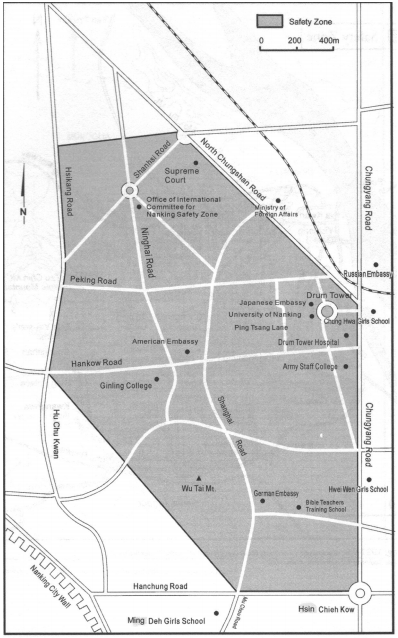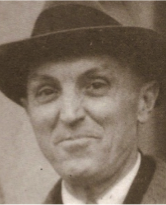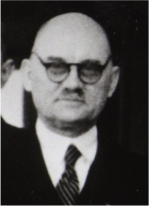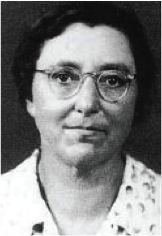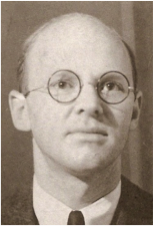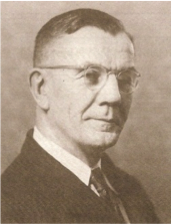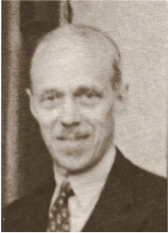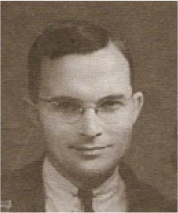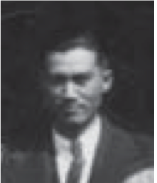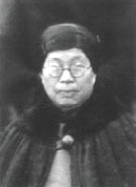Nanking Safety Zone & Rescuers
The International Committee for the Nanking Safety Zone was formed on November 22, 1937. Following the example of Jesuit Father Robert Jacquinot de Besange in Shanghai, these Westerners in Nanking finally created a demilitarized zone inside the city, the Nanking Safety Zone, to shelter Chinese refugees whose lives had been threatened and homes destroyed by the invading Japanese Imperial Army.
The International Committee managed the safety zone. The chairman was John Rabe, a German businessman and Nazi party member. The existence of the Safety Zone, the courageous and selfless acts of the few Westerners who remained behind in Nanking, together with the brave acts of many Chinese volunteers in the zone were responsible for saving the lives of tens of thousands of Chinese civilians during the Nanking Massacre.
It is estimated that when Nanking fell on December 13, 1937, the Safety Zone housed around 250,000 refugees. During the massacre the committee members found ways to provide these refugees with the basic needs of food, shelter, and medical care. It was not until May 1938 when all 25 refugee camps operated by the International Committee were closed but their relief works continued well into 1939.
The International Red Cross Committee of Nanking was also established at the last moment before Nanking fell when the Westerners were requested to set up the Red Cross Hospital to help treat the wounded soldiers and to coordinate the humanitarian aid efforts. It was chaired by Rev. John Magee and many of its members also served on the International Committee for Nanking Safety Zone.
Download a full version of the Introduction to the Nanking Safety Zone with membership lists of the international committees (PDF, 643 KB)Members of the International Committee for the Nanking Safety Zone
| Name | Nationality Occupation | Organization |
|---|---|---|
| Miner Searle Bates | American, professor | University of Nanking |
| George Ashmore Fitch*, Administration Director | American, administrator | Nanking YMCA |
| J.M. Hansen | Danish, businessman | Texas Oil Co. |
| J. Lean | American, businessman | Asiatic Petroleum Co. |
| Iver Mackay | British, businessman | Butterfield and Swire |
| Rev. John Gillespie Magee | American, clergyman | American Church Mission |
| Rev. Wilson Plumer Mills | American, clergyman | Northern Presbyterian Mission |
| P. H. Munro-Faure | British, businessman | Asiatic Petroleum Co. |
| J.V. Pickering | American, businessman | Standard-Vacuum Co. |
| John Rabe, Chairman | German, businessman | Siemens Co. |
| Charles Riggs | American, professor | University of Nanking |
| P.R. Shields | British, businessman | International Export Co. |
| G. Schultze-Pantin | German, businessman | Shingming Trading Co. |
| Lewis Strong Casey Smythe, Secretary | American, professor | University of Nanking |
| Eduard Sperling | German, businessman | Shanghai Insurance Co. |
| Clifford Sharp Trimmer | American, doctor | Kulou [Drum Tower, University of Nanking] Hospital |
| Xu Chuan-yin [Hsu Chuan-ying]* | Chinese | Vice-President, Nanking Branch of the Red Swastika Society** |
| * not original members of the International Committee ** a Chinese philanthropic society similar to the Red Cross Names in italics left Nanking in early December 1937 before the fall of the city. |
||
| Source: P11-18, They Were in Nanjing: The Nanjing Massacre Witnessed by American and British Nationals by Suping Lu published by Hong Kong University Press | ||
| P xiii Terror in Minnie Vautrin's Nanjing: Diaries and Correspondence, 1937-38 edited by Suping Lu, published by University of Illinois Press (2008) | ||
Members of The International Red Cross Committee of Nanking
| Name | Nationality Occupation | Organization |
|---|---|---|
| Miner Searle Bates | American, professor | University of Nanking |
| Rev. Ernest Herman Forster, Secretary | American, clergyman | American Church Mission |
| Christian Kröger, Treasurer | German, businessman | Carlowitz of Nanking |
| Li Chuin-nan [Li Chun-nan], Vice-Chairman | Chinese | Chinese Red Cross Society of Nanking |
| Lowe, Walter, Vice-Chairman | Chinese | |
| Rev. John Gillespie Magee, Chairman | American, clergyman | American Church Mission |
| Rev. Wilson Plumer Mills | American, clergyman | American Church Mission |
| Rev. James Henry McCallum | American, clergyman | United Christian Missionary Society |
| P. H. Munro-Faure | British, businessman | Asiatic Petroleum Co. |
| Nicolai [Cola] Podshivoloff | White Russian, businessman | Sandgren's Electrical Shop |
| John Rabe | German, businessman | Siemens Co. |
| Rev. Shen Yu-shu | Chinese, clergyman | |
| Lewis Strong Casey Smythe | American, professor | University of Nanking |
| Clifford Sharp Trimmer | American, doctor | Kulou [Drum Tower, University of Nanking] Hospital |
| Mary Twinem [Mary Dorothy Fine] | American-Chinese, teacher | University of Nanking |
| Minnie Vautrin | American, administrator | Ginling College |
| Robert Ory Wilson | American, doctor | Kulou Hospital |
| Names in italics left Nanking in early December 1937 before the fall of the city. | ||
| Source: P11-18, They Were in Nanjing: The Nanjing Massacre Witnessed by American and British Nationals by Suping Lu published by Hong Kong University Press | ||
Eyewitnesses as Rescuers and Upstanders and their Documentation
Rescuers and Upstanders of Nanking Massacre
As in the Nazi Holocaust, many individuals during the Nanjing Massacre tried to the best of their ability to help those in desperate need of medical care, protection, and sanctuary. At times their lives would be endangered, and in several cases this rescue work would cost them their lives. The common thread of these altruistic individuals is a comment by all: "You would have done the same thing."
One of the more well-known of those individuals who would defy the Japanese Imperial Army was John Rabe, a German businessman who helped establish the Nanking Safety Zone. He explained his reasons thus: "There is a question of morality here. I cannot bring myself for now to betray the trust these people have put in me, and it is touching to see how they believe in me."
Minnie Vautrin, the acting dean of Ginling (Jinling) College, another righteous individual, in 1937, recounted the horrors of the war in her diary:
There probably is no crime that has not been committed in this city today. Thirty girls were taken from language school last night, and today I have heard scores of heartbreaking stories of girls who were taken from their homes last night—one of the girls was but twelve years old. Food, bedding, and money have been taken from people. … I suspect every house in the city has been opened, again and yet again, and robbed. Tonight a truck passed in which there were eight or ten girls, and as it passed they called out "Giu ming! Giu ming!"—save our lives. The occasional shots that we hear out on the hills or on the street make us realize the sad fate of some man—very probably not a soldier.
An upstander, Reverend John Magee filmed the atrocities of the Japanese Imperial Army at the peril of his own life. He realized that these atrocities had to be documented. He had the 16mm film smuggled out of China so that the world would know what was happening in Nanjing.
In addition to the Westerners in the Nanking Safety Zone, many Chinese volunteers assisted these Westerners in rescuing those in danger. For example, Tsen Shui-fang [Cheng Rui-fang], an administrator at Ginling College and a nurse, worked with Dean Vautrin protecting and saving refugees.
These rescuers and upstanders remind us of the importance of standing up for others. The true test of a society is the ability to protect the rights of the smallest minority and teach each generation to have compassion, empathy, tolerance, and understanding for all human beings.
Source: P42, Chinese and Western Rescuers of the International Safety Zone Nanking, 1937-1938 published by The Richard Stockton College of New Jersey, Sara and Sam Schoffer Holocaust Resource Center (2011)
Westerners as Eyewitnesses and Rescuers
Prior to the fall of the city, all foreign citizens were ordered to evacuate by their respective embassies and institutions. Despite the approaching siege, however, a few Westerners decided to remain behind and to try to protect Chinese civilians. This group of Westerners, composed of missionaries, doctors, nurses, journalists, educators, administrators and businessmen, established the International Committee for the Nanking Safety Zone and the International Red Cross of Nanking.
A group of twenty-seven western nationals were still inside Nanking when the Japanese military broke through the city wall on 13 December, 1937 and they witnessed the ensuing atrocities. Amongst them, five American and British journalists left Nanking on 15 and 16 December, 1937. The last remaining group of twenty-two western nationals was then composed of fourteen Americans, five Germans, two Russians and one Austrian.
The Nanking Safety Zone set up by the Westerners was located in an area of about 3.8 sq. km that encompassed the American, Japanese and other embassies, Nanking University, and Ginling College. It is estimated that when Nanking fell on December 13, 1937, the Safety Zone housed around 250,000 refugees. During the massacre the International Committee members found ways to provide these refugees with the basic needs of food, shelter, and medical care. The International Committee members vehemently protested the army's actions to the Japanese authorities, but the carnage continued.
This last remaining group of twenty-two western nationals took up the responsibility of managing the Nanking Safety Zone and the International Red Cross Committee of Nanking. On numerous occasions, they risked their lives by intervening to prevent the execution of Chinese men or the rape of women and young girls. Along with these selfless Westerners, a number of Chinese volunteers also risked their own safety to aid their fellow Chinese in the Safety Zone.
The International Committee members frequently contacted Consul-General Okazaki Katsuo, Second Secretary (later Acting Consul-General) Fukui Kiyoshi and Attaché Fukuda Tokuyasu to deal with the anarchic situation. The Committee sent sixty-one letters to the Japanese Consulate reporting on various incidents which occurred during the period starting Dec 13, 1937 to Feb 9, 1938. These letters are quoted in H.J. Timperley's book What War Means: Japanese Terror in China. (Compiled and edited by H.J.Timperley / Victor Gollancz, July 1938).
Besides protesting to the Japanese embassy almost on a daily basis, Miner Searle Bates, John Magee, and George A. Fitch actively wrote of the chaotic conditions created by the Japanese troops, mimeographed or retyped their stories over and over and sent them to their friends, government officials, and Christian organizations so as to let the world, especially the American public, know what was going on in the terrorized city. Fitch succeeded in smuggling the films shot by Magee out of China when he temporarily left the country in January 1938. That year he traveled throughout the United States, giving speeches about what he witnessed in Nanking along with the films that showed haunting images of Chinese victims. In late January 1938, the Japanese army ordered all refugees in the Safety Zone had to return home by February 4. On 18 February, 1938 the International Committee was forced by the Japanese to change its name to [Nanking] International Relief Committee and to concentrate more on relief works. Out of the 25 refugee camps, 6 were closed in February or early March, and 13 more in March and April. Although by end May 1938, all refugee camps managed by the International Committee were closed, their relief work continued well into 1939.
In the United States the Committee on the Far East of the Foreign Missions Conference received scores of letters from those missionaries in Nanking. After weeks of consideration, they decided to release the letters in February 1938 despite the possible adverse effect on the Christian missionary movement in Japan. These letters were eventually published in magazines such as Readers' Digest in mid-1938. Today many of the missionaries' private diaries and letters that depicted the scale and character of the Nanking atrocities are collected at the Yale Divinity School Library.
Chinese Rescuers of the Nanking Safety Zone
- Upper class Chinese who had very close relationships with Westerners, such as Chen Rong, Xu Chuanyin, Han Xiang-lin, and Qi Zhao-chan. They were intellectuals, fluent in foreign languages. During the Nanking massacre, they worked directly with Westerners in the International Committee to handle various issues. Within the Zone they arranged and coordinated the relief distribution, moreover, they functioned as the communication bridge between refugees and Westerners; outside the Zone, they served as interpreters helping Westerners to negotiate with the Japanese. These Chinese made significant and irreplaceable contributions to the Safety Zone.
- Middle ranking Chinese management personnel, included special committee members in the Safety Zone, a majority of the directors of refugee shelters, and other administration staff. They were the backbone of the Safety Zone. Their conscientiousness and hardworking efforts greatly helped the smooth operation of the entire rescue.
- Safety Zone sanitation workers and policemen. Approximately 1500 registered International Committee employees who were in reality refugee volunteers. They came forward and offered their services when the Safety Zone was first established. Some of them were murdered after the Japanese seized the city, but most of them strived on during the occupation.
